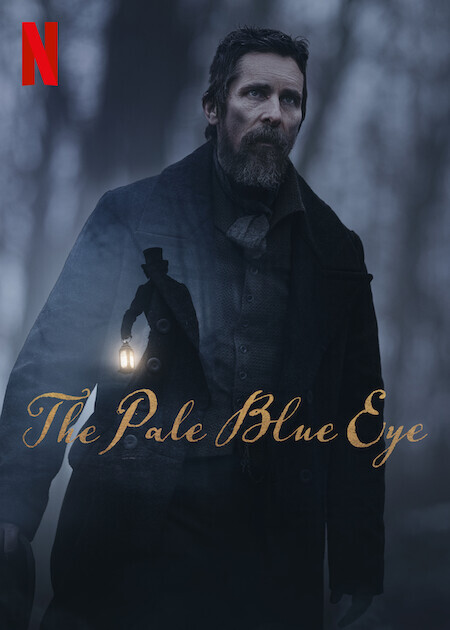Review | The Pale Blue Eye — a mystery solved too easily
A poster for “Pale Blue Eye” released on Netflix on Jan. 6.
January 18, 2023
“The Pale Blue Eye” is an action-packed gothic thriller streaming on Netflix, with a plot that viewers will find lacks consistency and depth.
Adapted from the 2003 novel, the film follows detective Augustus Landor (Christian Bale) in his search for the murderer responsible for a series of killings conducted at the United States Military Academy at West Point in New York.
Upon arrival at the academy, filmed at Westminster College in Lawrence County, Pennsylvania, Detective Landor befriends none other than Edgar Allen Poe, a young soldier at West Point. Poe graciously offers to assist Landor with the investigation in any way possible.
Landor then examines the victim, a soldier identified as “Fry,” who fellow soldiers found hanging with his heart ripped out of his chest with a note clutched in his hand.
After further examination, the doctor declares that the hanging was not a suicide and proclaims it a homicide. He also immediately dismisses the idea that a woman committed the crime, as they would not be strong enough. As a first-time viewer, this comment was distasteful and unnecessary.
Curious by Fry’s suicide note, Landor employs Poe to help figure out why Fry was not in his room the night of his death. Eventually, the two extract that someone had ordered Fry to meet him 一 though they are unsure who.
Someone finds a slaughtered sheep and cow at West Point, both with their hearts ripped out of their chests. This new revelation causes Landor to further investigate the sentiments behind heart dissection 一 learning that it is likely a result of Henri Le Clerc’s infamous “Discourse du Diable” 一 a method for the preservation of immortality.
This part of the plot strays viewers from the deeper meaning the film tries to convey, as it is not at all related to witchcraft-like practices, and later leaves many questions unanswered. Despite this, the demonic touch does promote further engagement.
This demonic discovery seems to provoke the inner demons of Landor, as viewers witness his hallucination of his since-passed daughter Mattie. Though her effect on her father is essential to uncovering the truth of the murders, this is the only time she appears to the audience until the film’s finale.
Somewhere in the midst of all of this commotion, Fry’s funeral occurs. Filmed in the Allegheny Cemetery in Pittsburgh, this scene is vital to the succession of the plot. But in terms of the plot in its entirety, this scene felt too easy and one-dimensional.
Moments later, Landor meets the wife of West Point’s doctor, and a strange encounter ensues, to say the least. This introduction seems to transitively introduce Lea, the family’s daughter, as a few scenes later she is fraternizing with Mr. Poe, though the characters seem to have forced chemistry.
As the hunt for the murderer continues and pressure from the academy increases on Detective Landor, soldiers searching for a missing student find another body hanged, castrated and heartless. This additional murder instills even more fear across the academy and pushes the detective to crack down on the suspect. With the doctor and his family in mind, Landor and Poe attend a family dinner, where chaos ensues.
During the occasion, Landor is able to acquire information critical to finding the suspect of the case within the first few minutes of wandering about the upstairs while the family carries on.
Once again, Landor seems to do very little detective work himself, though all the pieces he needs to move on fall directly in his lap. It’s all just too convenient. Although this is probably intentional, it was quite frustrating to watch.
Landor, to no surprise, then catches the criminal in the act, attempting to kill someone dear to the detective. This part of the plot makes no sense, as the victim in question has volunteered to be sacrificed out of true love.
Despite the suspect’s involvement in the rituals, they deny having any relation to the murder of Fry himself. What doesn’t make sense here is why the suspect only began these suspicious activities when the murders commenced if they believed they were essential to life. And if the murderer also killed animals during this time, why didn’t they do it before the detective’s arrival? The murderer evades having to answer these questions through an accidental death — again, too easily.
Overall, the film leaves the audience with the question as to whether justice is served, what that means for everyone involved and if the actions over the course of the film are intentionally aligned or coincidentally easy. It feels as though Netflix intentionally shortened the production and pulled crucial fragments out.



